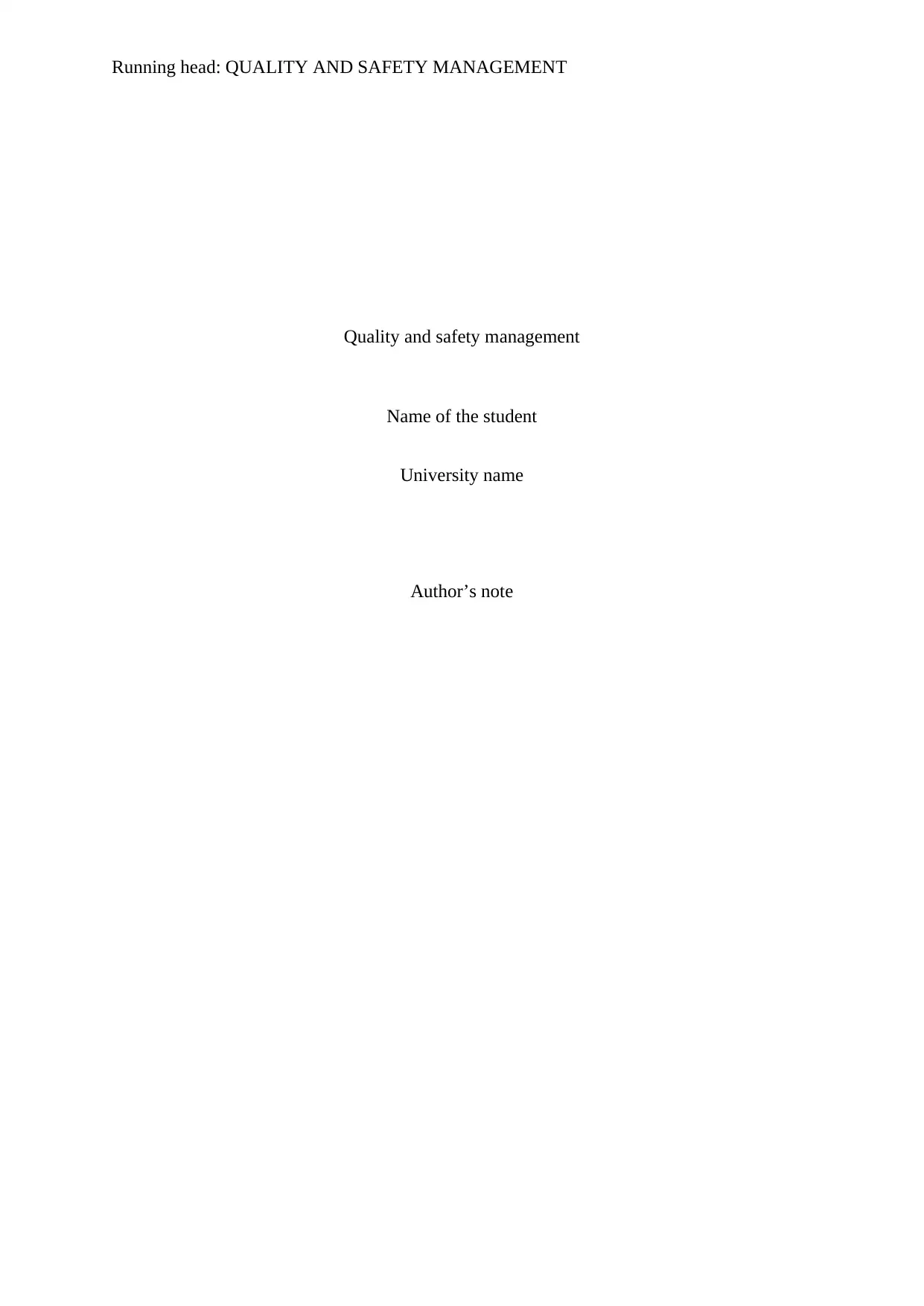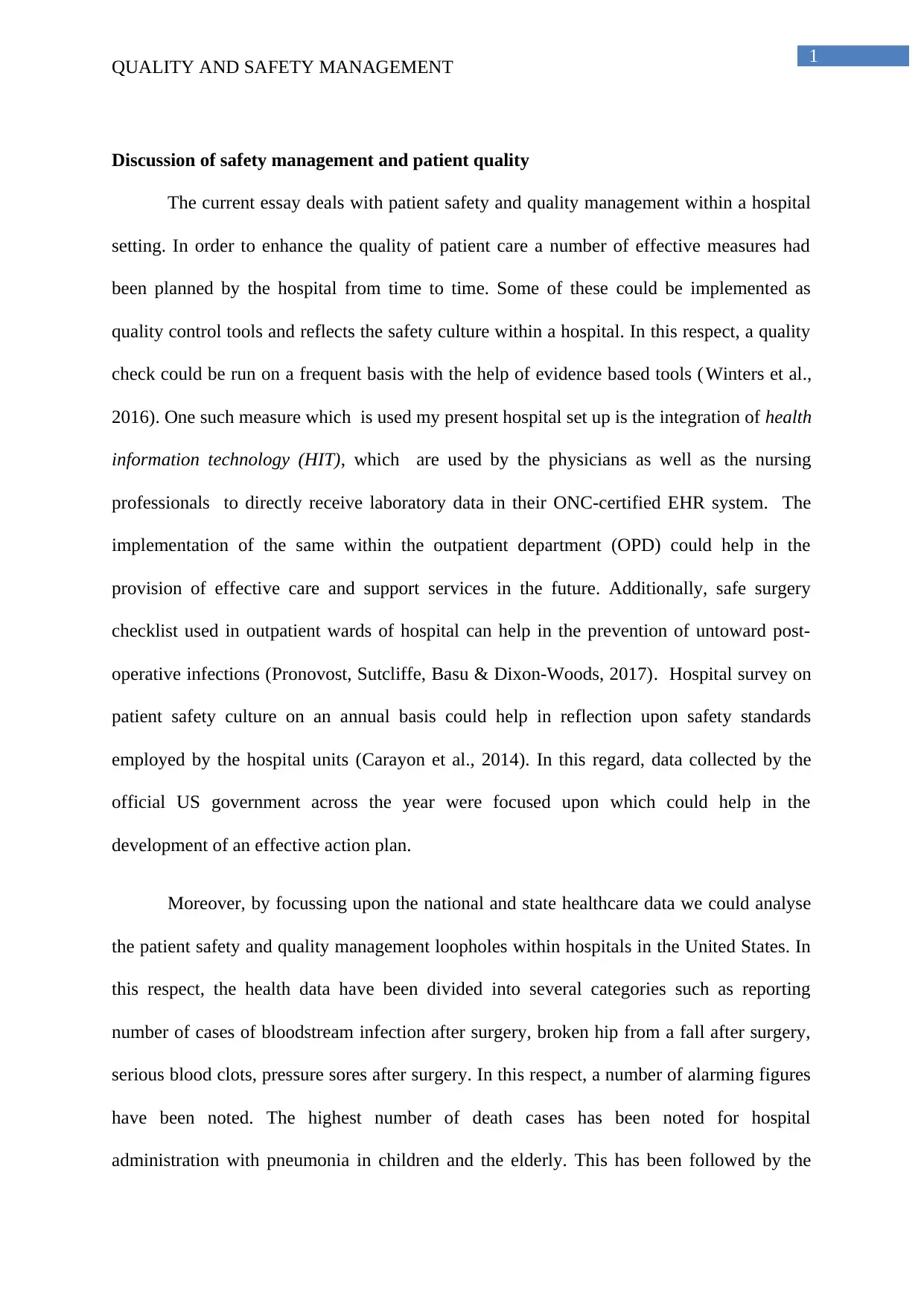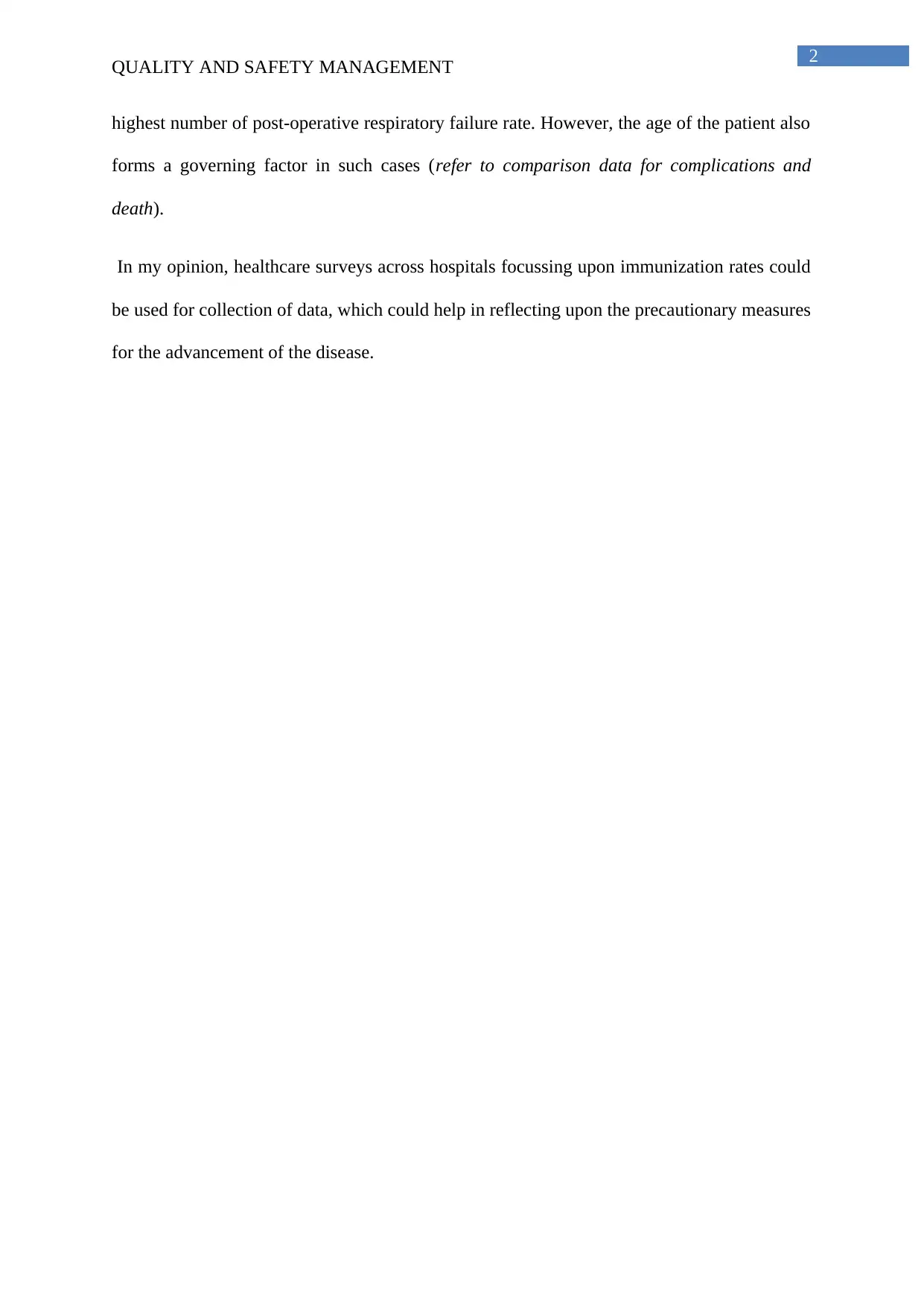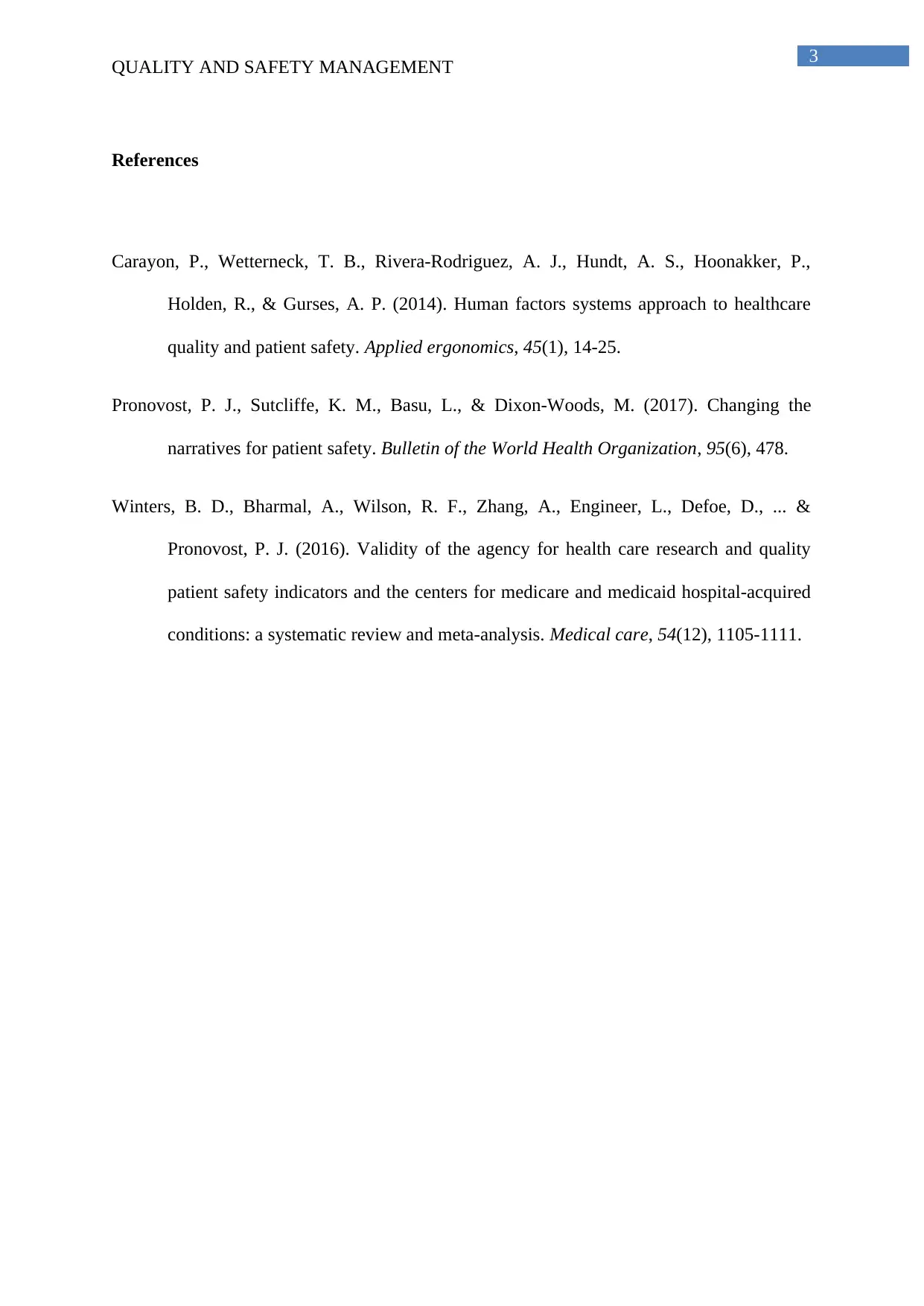Quality and Safety Management: Hospital Report Analysis
VerifiedAdded on 2020/05/16
|4
|640
|38
Report
AI Summary
This report examines patient safety and quality management within a hospital setting, focusing on the implementation of effective measures to enhance patient care. It highlights the use of health information technology (HIT) and safe surgery checklists as tools for improving patient outcomes and preventing post-operative infections. The report also discusses the importance of hospital surveys on patient safety culture and the analysis of national and state healthcare data, including the reporting of bloodstream infections, blood clots, and pressure sores, to identify areas for improvement. The report also emphasizes the significance of patient age and immunization rates. Overall, the report offers a detailed overview of the current practices and potential improvements in hospital quality and safety management.
1 out of 4











![[object Object]](/_next/static/media/star-bottom.7253800d.svg)